Circular Os and Xs
On a ferry journey, Jude wanted a pen and paper game that we didn’t already know how to play, so she invented a variant on naughts and crosses (‘tic-tac-toe’). You play it on this board:
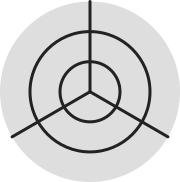
You still have to get three of your marks in a row, but there are more ways for this to happen than in normal Os and Xs:
| Three rings: | Three radial lines: |
 |
 |
| Three clockwise spirals: | Three anti-clockwise spirals: |
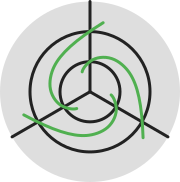 |
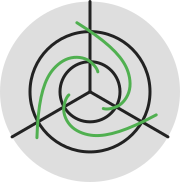 |
We wanted to know whether there was a winning strategy, so we drew a whole pile of diagrams to work out how the play would develop:
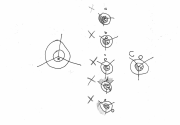


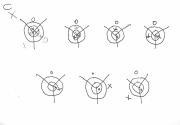
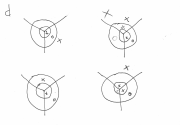
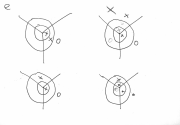
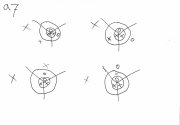
and concluded that the first player always wins.
Winning strategy for first player
One winning starting move is for X to play here:

Because of symmetry, there are only five possible responses from O, and we now look at them one at a time.
(1) Top-right inner
If O plays here:
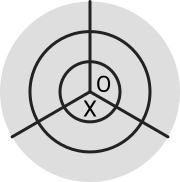
then X has a winning move by playing here:
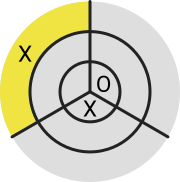
because that threatens a win along this spiral:

and so O is forced to play here:
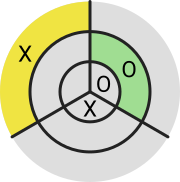
threatening a win along the top-right radial, so X must respond like this:
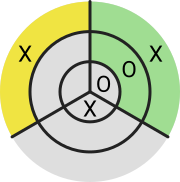
which leaves the board with two winning options for X (the outer ring, and a clockwise spiral):
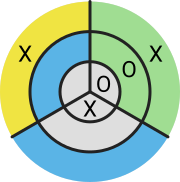
of which O can block at most one, leaving X to win. (This analysis also covers the case where O plays in the top-left inner space, by reflecting everything left–right.)
(2) Top-right middle
If O plays here:

we can go through a similar argument:
| (1) X can play: | (2) O must respond: |
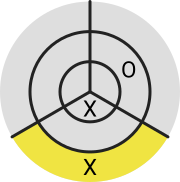 |
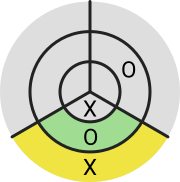 |
| (3) X must respond: | (4) X has two winning options: |
 |
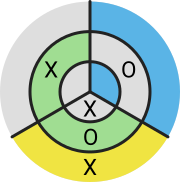 |
(Symmetry gives us the strategy for X to follow if O plays in the top-left middle segment.)
(3) Top-right outer
If O plays here:
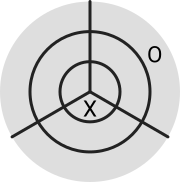
the play develops like this:
| (1) X can play: | (2) O must respond: |
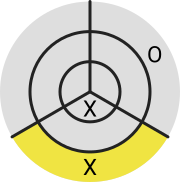 |
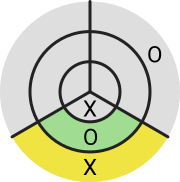 |
| (3) X must respond: | (4) X has two winning options: |
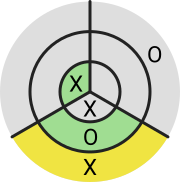 |
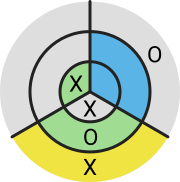 |
(Symmetry gives us the strategy for X to follow if O plays in the top-left outer segment.)
(4) Bottom middle
If O plays here:
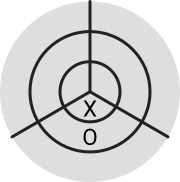
we get this:
| (1) X can play: | (2) O must respond: |
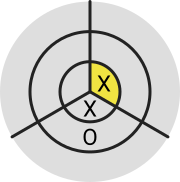 |
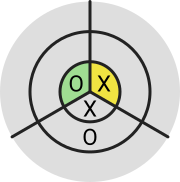 |
| (3) X must respond: | (4) X has two winning options: |
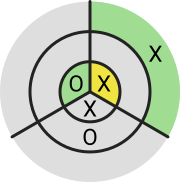 |
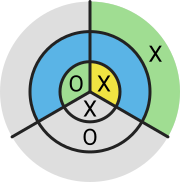 |
(5) Bottom outer
And finally if O plays here:
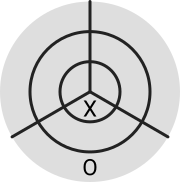
then X can win like this:
| (1) X can play: | (2) O must respond: |
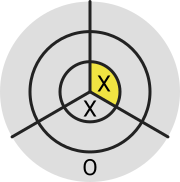 |
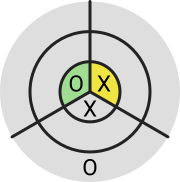 |
| (3) X must respond: | (4) X has two winning options: |
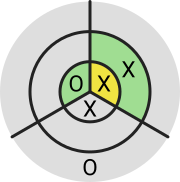 |
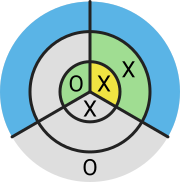 |
Conclusions
This game was fun to analyse, but it turned out that the game isn’t that interesting to play, because the first player always wins. From this point of view it’s no worse than normal Os and Xs, which always ends in a draw. (Both these statements are made under the assumption that both players do the best they can.)
Cylindrical Os and Xs
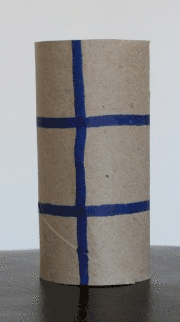
Afterwards, we saw that you can puncture the middle of the board, and then it’s equivalent to joining the two edges of a normal Os and Xs board, ending up with a cylinder. The rings in the circular formulation are horizontal lines round the cylinder. Radials are vertical lines along the cylinder. The six spirals become diagonals, with six diagonals appearing (rather than the usual two) because you wrap round the cylinder.